We will just have to wait and see now won't we? ;-) Paste the link if you don't receive the images.
http://www.viewzone.com/timewave.html
Be Well.
David
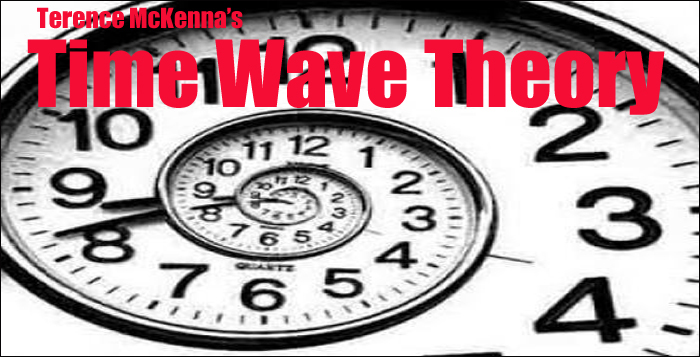
by Dan Eden for Viewzone I have a very good friend named Johnny who lives in Patagonia, one of the safest places on the planet. He often sends me ideas for stories on viewzone. A while back he tried to get me interested in something called the "Time Wave Theory." My initial reaction was to pass on the story. A theory about time? Einstein couldn't define what time is (or was, or will be). But The Timewave Theory is perhaps the hottest topic on the internet today. Many reputable scientists and physicists have embraced it. It has broken the barriers between esoteric philosophy and pragmaticism. And, as you will see, its discovery is predicted within the theory itself. Lots of trendy websites have given summaries of McKenna's theories, especially as they relate to 2012, but hardly anyone has explained the theory in a logical way. Since that is my raison d'etre here on viewzone, I will attempt to do this now. The biography of Terence McKenna is fascinating and certainly worth exploring, but I will leave that for later. Our story begins in China about 4000 years ago with a phenomenon called the I-Ching. The I-Ching The Chinese people are great at understanding abstractions. Their writing consists of symbols that suggest an idea or concept rather than phonetic sounds, like English. With hundreds of different dialects spoken in China, often people living in a neighboring village cannot understand the spoken language of their countrymen. Although the sounds and phonetics may vary, the written Chinese symbols are understood by everyone. Why is this important? The I-Ching is a system for what the Western mind would call "fortune telling." But instead of being able to tell you who you will marry, when you will die or next week's lottery numbers, the I-Ching predicts the pattern of events which will govern and shape your destiny. It's an abstract vignette of a universal influence for a specific block of time. In the I-Ching, there are patterns which are composed of six possibilities, represented by either a broken line (yin) or a solid line (yang). By simple mathematics it is easy to understand that two possible patterns, expressed in a matrix of six (called a hexagram), yield a possibility of exactly 64 different hexagrams. Typically, if you are in Asia and engage the I-Ching, you will toss a coin six times and record the heads or tails (yin or yang) and arrive at one of these 64 hexagrams. By referencing the Book of I-Ching, you will be able to ascertain the flow of events that governs your present and future life. The results will not be specific -- it's more of a kind of weather report describing the outcome of your actions. So why is this important to the Timewave Theory? It's not, really. The I-Ching is a kind of parlor game that evolved from something deeper and more significant. The true basis of the I-Ching was understood many thousands of years ago and was lost in centuries of ignorance and political upheaval -- that is until Terence McKenna accidentally stumbled upon it in the 1970s. The hexagrams Examining the King Wen I-Ching hexagrams, McKenna noticed an obvious pattern. The first hexagram contains six solid lines. Hexagram number two has six broken lines. Hexagrams 3 and 4 appear to be similar pairs that have been rotated 180 degrees. The same is true for most of the other hexagrams -- they are pairs in which the second hexagram has been rotated 180 degrees. McKenna noticed that sometimes, when a hexagram was supposed to be rotated, the rotation would not change the configuration. An example of this can be seen in hexagram 27. It also is the case with seven other hexagrams (#1, 2, 28, 29, 30, 61 and 62). When this happens there is a different rule that applies. The following hexagram is exactly opposite -- the yins become yangs and visa versa. McKenna then focused his attention on the number of lines that changed in each subsequent hexagram, moving from the first to the sixty-fourth. From hexagram 1 to 2 there were six changed lines, from hexagram 2 to 3 there were two, then four, and four again... He plotted these changes on a graph and arrived at a unique pattern. But he didn't make much sense out of this. He needed to understand why the I-Ching was made of six lines and why was it arranged in pairs that were rotated 180 degrees. The breakthrough came when he noticed that the extreme left and right of the graph contained a saw-tooth pattern. If he copied the graph, rotated it 180 degrees and superimposed it on the original graph it meshed perfectly "like the dove tail of a cabinet maker." To incorporate the six lines, McKenna repeated this new graph six times and superimposed it on the single plot. To incorporate the phenomenon of "pairs" of hexagrams, he repeated the pattern two times and superimposed it on the other two graphs. Eventually he arrived at a complex shape containing all three graphs. But what did this mean? With a computer it was possible to combine the peaks and valleys and arrive at an average graph (see math at http://www.fractal-timewave.com/math_twz.htm), representing the change of the 64 hexagrams and, as McKenna believed, revealing the secret encoded in their original design. This graph has become known as the Timewave. It is difficult for a Western mind to comprehend abstracts. In our everyday lives we ignore things that don't have immediate relevance, yet we do have many abstracts that we take for granted. Good and evil, light and darkness, love and hate -- these are opposite abstracts that we would have difficulty describing without using both words in the pair. Good is the absence of evil, darkness is the absence of light. Even in physics we have matter and anti-matter, positive and negative charges... In Asian Taoism philosophy the concept of opposing phenomena is represented by the Yin and Yang. Both are always present in everything, yet the amount of influence of each varies over time. It is impossible to talk about yin or yang without some reference to the opposite, since yin–yang are bound together as parts of a mutual whole. A race with only men or only women would disappear in a single generation; but men and women together create new generations that allow the race they mutually create (and mutually come from) to survive. The interaction of the two gives birth to things. Yin and yang transform each other: like an undertow in the ocean, every advance is complemented by a retreat, and every rise transforms into a fall. Thus, a seed will sprout from the earth and grow upwards towards the sky - an intrinsically yang movement. Then when it reaches its full potential height it will descend. The individual lines of the I-Ching are made up of both Yin (broken lines) and Yang (solid lines). The concept of change and balance is inherent in the hexagrams. McKenna understood that his final graph must contain the "fingerprint" of change contained in time itself. The peaks represent the abstraction of "stasis" or habitual stability, while the valleys represent novelty or change. Fractals anyone? A fractal is a shape produced by plotting mathematical data which repeats whether viewed on a macro or micro scale. McKenna realized that his Time Wave had this special characteristic. The entire graph, representing the beginning and end of time, can be seen duplicated when one looks at a smaller span of time.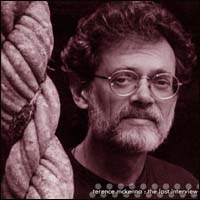 The Timewave theory, put forth by Terence McKenna [right], is further complicated by the fact that he is dead, and that much of what he learned about the theory is alleged to have come to him during shamanic visionary states while he was living in the Amazon jungle. Hmmm.
The Timewave theory, put forth by Terence McKenna [right], is further complicated by the fact that he is dead, and that much of what he learned about the theory is alleged to have come to him during shamanic visionary states while he was living in the Amazon jungle. Hmmm.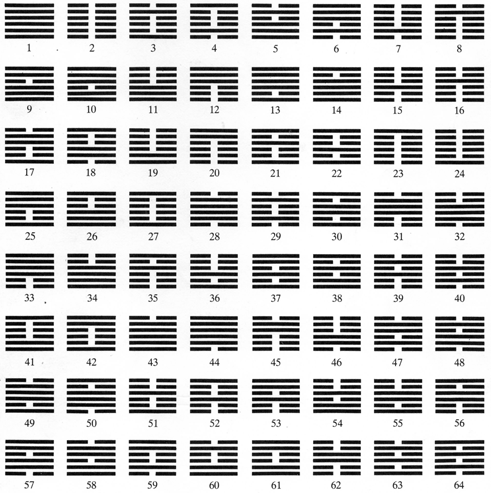
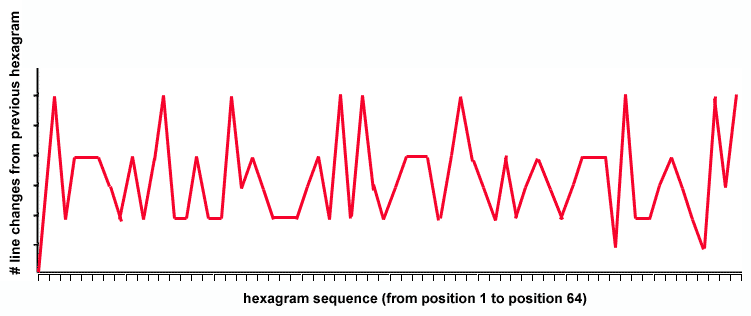
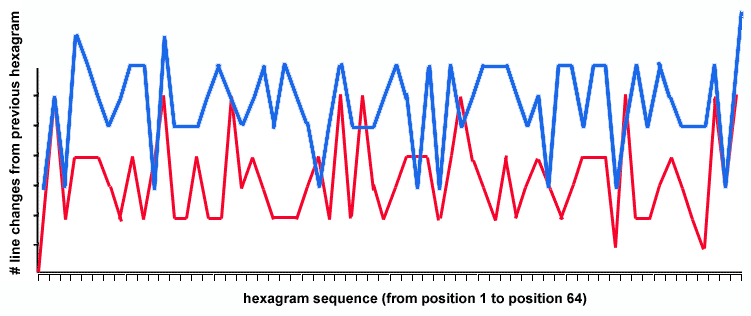
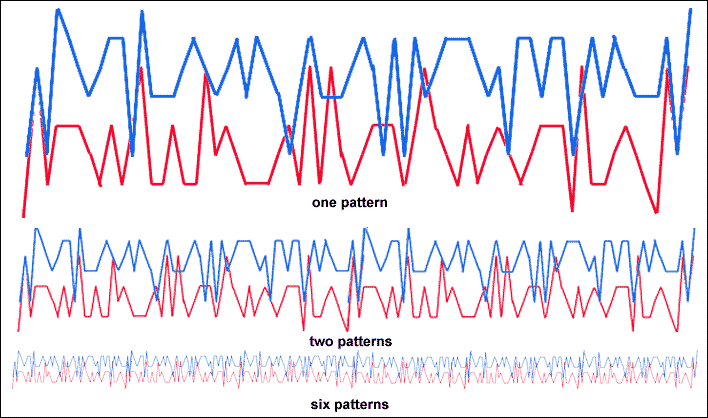
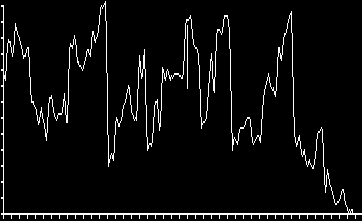 Confused?
Confused? The nature of yin-yang 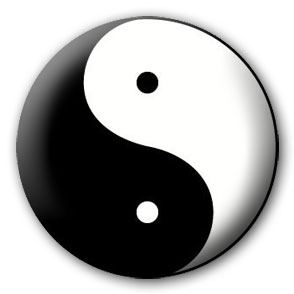 In Taoist philosophy, yin and yang arise together from an initial quiescence or emptiness (wuji, sometimes symbolized by an empty circle), and continue moving in tandem until quiescence is reached again. For instance, dropping a stone in a calm pool of water will simultaneously raise waves and lower troughs between them, and this alternation of high and low points in the water will radiate outward until the movement dissipates and the pool is calm once more. Yin–yang, thus, are always opposite and equal qualities. Further, whenever one quality reaches its peak it will naturally begin to transform into the opposite quality: grain that reaches its full height in summer (fully yang) will produce seeds and die back in winter (fully yin) in an endless cycle.
In Taoist philosophy, yin and yang arise together from an initial quiescence or emptiness (wuji, sometimes symbolized by an empty circle), and continue moving in tandem until quiescence is reached again. For instance, dropping a stone in a calm pool of water will simultaneously raise waves and lower troughs between them, and this alternation of high and low points in the water will radiate outward until the movement dissipates and the pool is calm once more. Yin–yang, thus, are always opposite and equal qualities. Further, whenever one quality reaches its peak it will naturally begin to transform into the opposite quality: grain that reaches its full height in summer (fully yang) will produce seeds and die back in winter (fully yin) in an endless cycle.
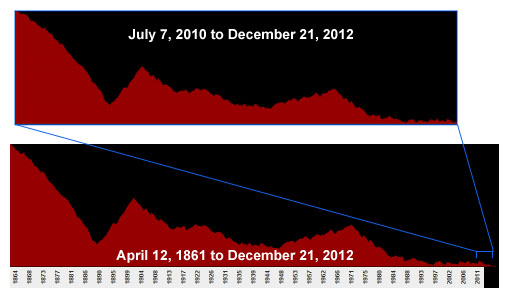
In the example above the same pattern can be seen for plotting two differnt eras. The bottom plot spans almost 150 years while the top plot spans about 1.5 years.
 McKenna liked to joke about this phenomenon in his lectures. He would use the example of the fall of the Roman Empire, saying that it followed the same pattern -- habit and novelty -- as when he vacuumed his living room.
McKenna liked to joke about this phenomenon in his lectures. He would use the example of the fall of the Roman Empire, saying that it followed the same pattern -- habit and novelty -- as when he vacuumed his living room.
Understanding this "fractal" concept makes it easier to understand why the I-Ching was used to predict the outcome of current events in Chinese philosophy. If one could learn where on the Timewave they were then they could infer whether novelty or habit were in play.
Time compression
As the Timewave pattern moves through time, the fractals become smaller and smaller. What took eons of time to complete next takes only thousands of years, then hundreds, then days, minutes, seconds. As we approach the zero point on the grand Timewave, waves of novelty and habit change more rapidly. This can appear chaotic to our sense of time but it is because the very pattern of time IS speeding up.
Indeed the knowledge and understanding that we have accomplished in the last hundred years of civilization far surpasses the achievements of many thousands of years before. It is not so surprising then that the Timewave theory should be discovered, or perhaps re-discovered, at this fast paced era near the end of time.
What is novelty?
Novelty is characterized by increased activity and options. For humans, this usually follows some great discovery or event which changes our behavior. Imagine an ant's nest where workers go about their daily routine of foraging for food. All of a sudden a sugar cube is dropped on the ant mound and suddenly the behavior of the nest changes to take advantage of this new opportunity. If the discovery is significant enough the ant colony may have enough food for many weeks, thereby ushering in a period of stability and wellbeing. Novelty ushers in stability and visa versa.
Novelty and stability may appear opposite but they are always present in time. The Timewave plots the move from one direction to the other. Moving up indicates a gradual increase in stability and organization while a downward curve shows that some new factors are influencing change. It's a continuous ebb and flow.
I thought it would be helpful to take a look at the Timewave for the past two decades.
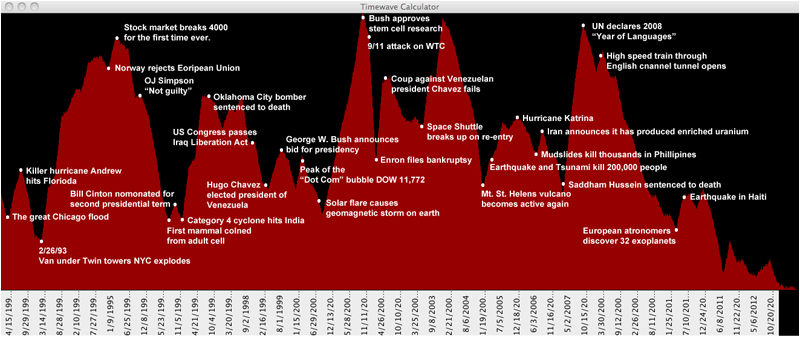
The above timewave begins on February 1992 and ends on December 21, 2012. Yes, it's "doomsday" but we'll talk about that later. I have marked some events that happened close to the significant turning points -- either just before a downward or upward curve. I will let you decide if these events validate their position on the graph.
Doomsday
When he finally arrived at the shape of the Timewave, McKenna then had to superimpose it on historical events. He placed the beginning of the wave at the theoretical beginning of the universe, more than 15 billion years ago. Here, the Timewave graph began at zero and spiked up to reach a high degree of organization. As he plotted the wave he realized that it eventually reached zero at the end. Further, this end was in our present era!
The last harmonic of the wave has a duration of 67.29 years, marked again by some dramatic event at the onset of the pattern. At first McKenna placed this event with the dropping of the atomic bomb on Hiroshima. This worked out to the graph reaching zero in mid-November of 2012. Later, when he learned of the end date of the Mayan calendar, he adjusted the wave to coincide with this time.
According to the Timewave theory, on December 21, 2012 we will be in the unique position in time where we will experience maximum novelty -- maximum potential for change. Not since the birth of our universe has this happened. What will follow this date is something that we cannot imagine. The next day, if time recycles, will usher in incredible order and organization. Will we be part of this?
| Terence McKenna, November 16, 1949 to April 3, 2000 In the early 1980s, McKenna began to speak publicly on the topic of psychedelic drugs, lecturing extensively and conducting weekend workshops. Timothy Leary once introduced him as "one of the five or six most important people on the planet". "It's clearly a crisis of two things: of consciousness and conditioning. These are the two things that the psychedelics attack. We have the technological power, the engineering skills to save our planet, to cure disease, to feed the hungry, to end war; But we lack the intellectual vision, the ability to change our minds. We must decondition ourselves from 10,000 years of bad behavior. And, it's not easy." -- Terence McKenna, This World...and Its Double
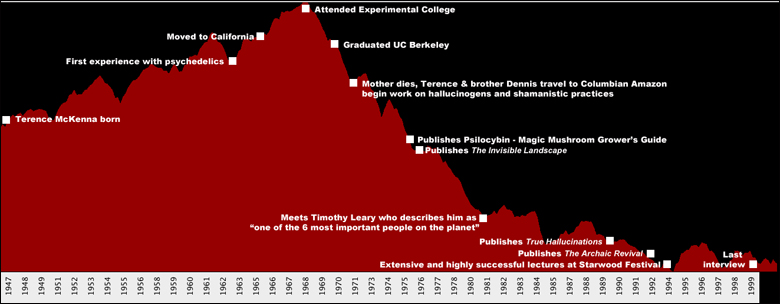 He soon became a fixture of popular counterculture, and his popularity continued to grow, culminating in the early to mid 1990s with the publication of several books such as True Hallucinations (which relates the tale of his 1971 experience at La Chorrera), Food of the Gods and The Archaic Revival. He became a popular personality in the psychedelic rave/dance scene of the early 1990s, with frequent spoken word performances at raves and contributions to psychedelic and goa trance albums by The Shamen, Spacetime Continuum, Alien Project, Capsula, Entheogenic, Zuvuya, Shpongle, and Shakti Twins. His speeches were (and continue to be) sampled by many others. In 1994 he appeared as a speaker at the Starwood Festival, which was documented in the book Tripping by Charles Hayes (his lectures were produced on both cassette tape and CD). McKenna was a contemporary and colleague of chaos mathematician Ralph Abraham and biologist Rupert Sheldrake (creator of the theory of "morphogenetic fields", not to be confused with the mainstream usage of the same term), and conducted several public debates known as trialogues with them, from the late 1980s up until his death. Books which contained transcriptions of some of these events were published. He was also a friend and associate of Ralph Metzner, Nicole Maxwell, and Riane Eisler, participating in joint workshops and symposia with them. He was a personal friend of Tom Robbins, and influenced the thought of numerous scientists, writers, artists, and entertainers, including comedian Bill Hicks, whose routines concerning psychedelic drugs drew heavily from McKenna's works. He is also the inspiration for the Twin Peaks character Dr. Jacoby. McKenna also co-founded Botanical Dimensions with Kathleen Harrison (ethnobotanist) (his colleague and wife of 17 years), a non-profit ethnobotanical preserve on the island of Hawaii, where he lived for many years before he died. Before moving to Hawaii permanently, McKenna split his time between Hawaii and a town called Occidental, located in the redwood-studded hills of Sonoma County, California, a town unique for its high concentration of artistic notables, including Tom Waits and Mickey Hart. Of all his many accomplishments, Terence McKenna will be remembered for his discovery of the Timewave Novelty Theory and his unparalleled ability to describe this theory to others in a way that made it interesting, understandable and congruent with both physics and religion. As physicists look deeper and further in to the infinity of quantum mechanics, McKenna's work on the structure of time is gaining more respect and application. While some conservative minds will condemn his use of mind-altering drugs, it is perhaps because of the other-worldly nature of these psychedelic experiences that the abstractions of time were revealed. We can only wait and see. |

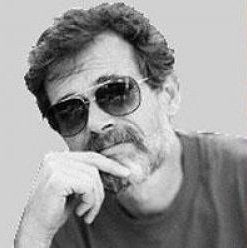 Following the death of his mother in 1971, Terence, his brother Dennis, and three friends traveled to the Colombian Amazon in search of oo-koo-he, a plant preparation containing DMT. Instead of oo-koo-he they found various forms of ayahuasca and gigantic psilocybe cubensis which became the new focus of the expedition. In La Chorrera, at the urging of his brother, he allowed himself to be the subject of a psychedelic experiment which he claimed put him in contact with Logos: an informative, divine voice he believed was universal to visionary religious experience. The revelations of this voice, and his brother's peculiar experience during the experiment, prompted him to explore the structure of an early form of the I Ching, which led to his "Novelty Theory". These ideas were explored extensively by Terence and Dennis in their 1975 book The Invisible Landscape - Mind Hallucinogens and The I Ching.
Following the death of his mother in 1971, Terence, his brother Dennis, and three friends traveled to the Colombian Amazon in search of oo-koo-he, a plant preparation containing DMT. Instead of oo-koo-he they found various forms of ayahuasca and gigantic psilocybe cubensis which became the new focus of the expedition. In La Chorrera, at the urging of his brother, he allowed himself to be the subject of a psychedelic experiment which he claimed put him in contact with Logos: an informative, divine voice he believed was universal to visionary religious experience. The revelations of this voice, and his brother's peculiar experience during the experiment, prompted him to explore the structure of an early form of the I Ching, which led to his "Novelty Theory". These ideas were explored extensively by Terence and Dennis in their 1975 book The Invisible Landscape - Mind Hallucinogens and The I Ching.



No comments:
Post a Comment